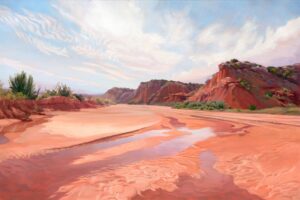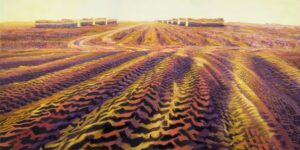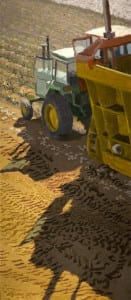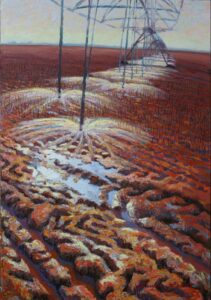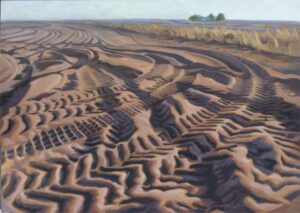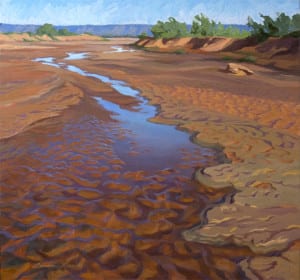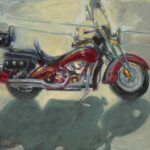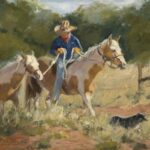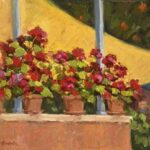
Lines, colors, shapes, usually on a flat rectangular surface: that’s how we most often define “a painting.” As an objet d’art it has perceived value, both inside and out of the marketplace. Often paintings contain little or no moving parts. Precious metals may be employed, but not usually — it’s simply canvas by-the-yard and pigment. The materials of which a painting is made today are not much different than they were thousands of years ago, when early man painted and engraved shapes of animals on cave walls, with crushed plants and vegetable matter for paint, and animal-fat crayons and fingertips for brushes. The technology of paint-making and the variety of painting surfaces have significantly improved since then, but paint is still made of pigments and the surface of a painting is still usually flat. Doesn’t sound that impressive, does it?
“The synthesis of truth and beauty…is the highest and deepest reality.”Ovid

“ We keep our eyes on the things we cannot see: for the things which we can see are temporal; the things that are unseen are eternal.”2 Corinthians 4:18

The artist is the catalyst in this process of Imagineering and revelation. It is through the artist’s eye that new possibilities can be discovered, and comprehended. In fact, former President John F. Kennedy underlined that creative significance: “I see little of more importance to the future of our country and of civilization than full recognition of the place of the artist. If art is to nourish the roots of our culture, society must set the artist free to follow his vision wherever it takes him.” The painter does what the director does for a film, or the composer for a symphony. He or she draws unrelated concepts together, instills pattern, variety and unity, and discloses the essence of an idea. If we look through the painter’s lens, we are treated to a new perspective on reality. The visionary artist is a conductor on the journey to an exotic destination. We begin to understand that here is something higher in that artwork, than just paint and canvas.
“An artist is not paid for his labor, but for his vision.”James Abbot McNeill Whistler
For a painting, it is the experience of the artist expressed therein that is of utmost value. The material nature of the work is quite secondary. A painting that conveys the power of emotion to the viewer is more than “just paint and canvas.” It is the description of a heartfelt concept that has been forged into tangible excellence through a creative process of envisioning and technical facility. It even has the power to change lives. “(Art) has the capacity to penetrate even the most callous skin and to ignite a revolution from within,” as musician Benjamin Moore so eloquently reminds us. Pursuing art with our whole hearts and minds is probably the most civilizing undertaking we can do as artists. “What a privilege it is to be able to take brush in hand and put paint on paper in this troubled world,” is our encouragement from artist Veronica Stensby.
A painting’s value is not in its material nature, as “just paint and canvas.” Rather, it is the vision an artist expresses with those materials that is of value: that slice of heaven, the best of the Best, that idea of the Ideal, that is the central core of both the material and spiritual worth of an artwork.
